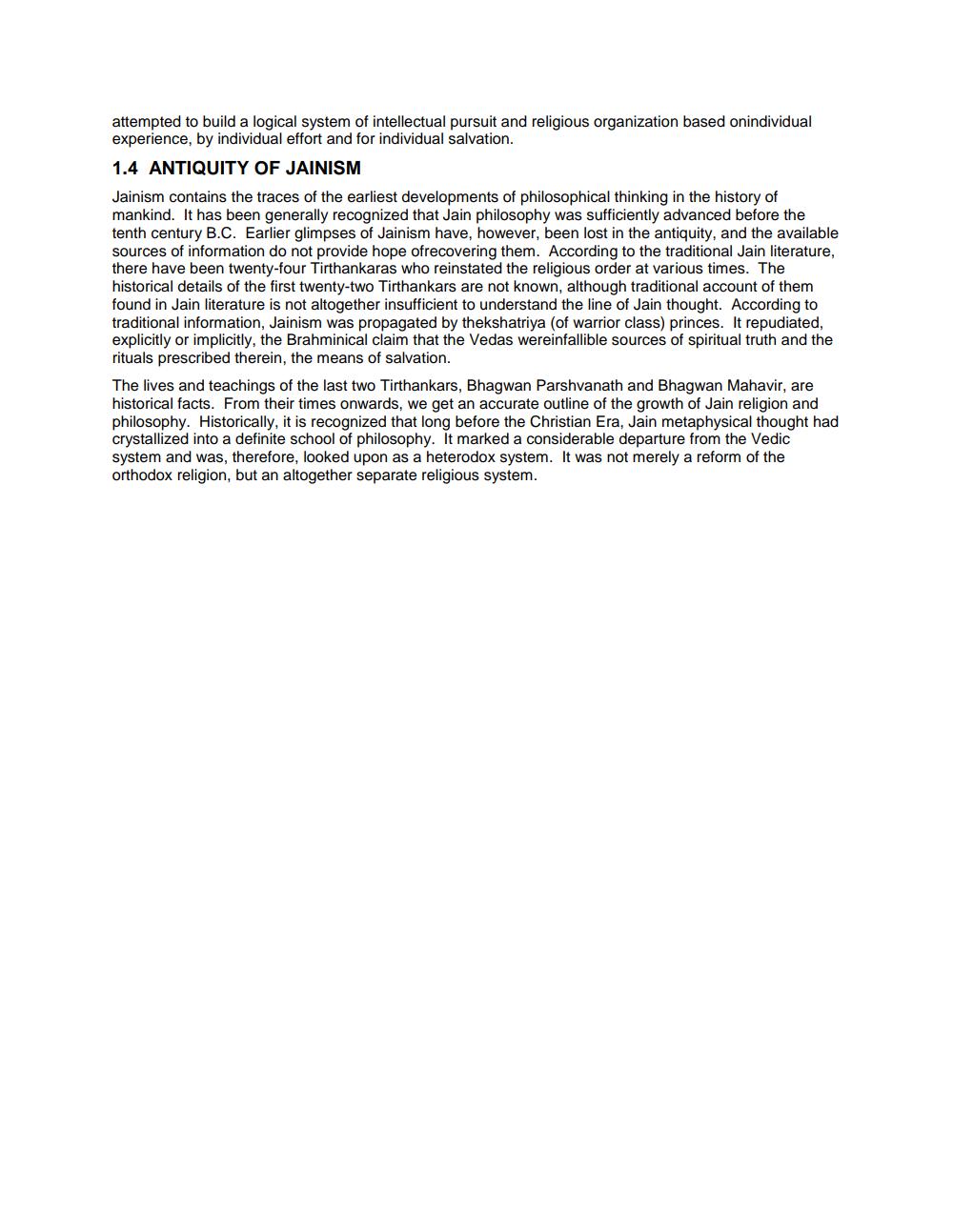Book Title: Panoramic View Of Jainism Author(s): Ratankumar Jain Publisher: Ratankumar Jain View full book textPage 5
________________ attempted to build a logical system of intellectual pursuit and religious organization based onindividual experience, by individual effort and for individual salvation. 1.4 ANTIQUITY OF JAINISM Jainism contains the traces of the earliest developments of philosophical thinking in the history of mankind. It has been generally recognized that Jain philosophy was sufficiently advanced before the tenth century B.C. Earlier glimpses of Jainism have, however, been lost in the antiquity, and the available sources of information do not provide hope ofrecovering them. According to the traditional Jain literature, there have been twenty-four Tirthankaras who reinstated the religious order at various times. The historical details of the first twenty-two Tirthankars are not known, although traditional account of them found in Jain literature is not altogether insufficient to understand the line of Jain thought. According to traditional information, Jainism was propagated by thekshatriya (of warrior class) princes. It repudiated, explicitly or implicitly, the Brahminical claim that the Vedas wereinfallible sources of spiritual truth and the rituals prescribed therein, the means of salvation. The lives and teachings of the last two Tirthankars, Bhagwan Parshvanath and Bhagwan Mahavir, are historical facts. From their times onwards, we get an accurate outline of the growth of Jain religion and philosophy. Historically, it is recognized that long before the Christian Era, Jain metaphysical thought had crystallized into a definite school of philosophy. It marked a considerable departure from the Vedic system and was, therefore, looked upon as a heterodox system. It was not merely a reform of the orthodox religion, but an altogether separate religious system.Page Navigation
1 ... 3 4 5 6 7 8 9 10 11 12 13 14 15 16 17 18
